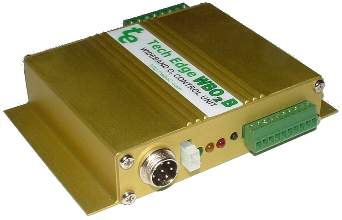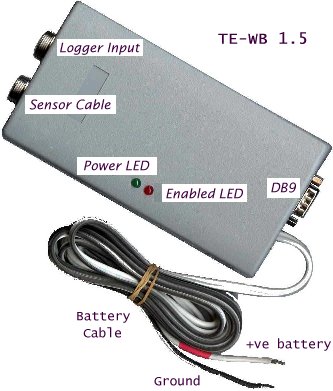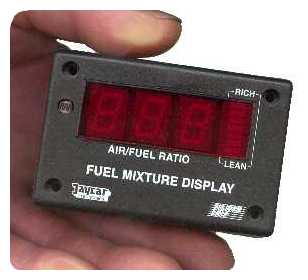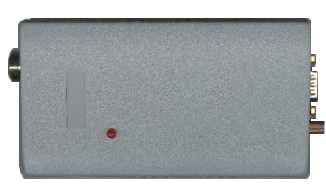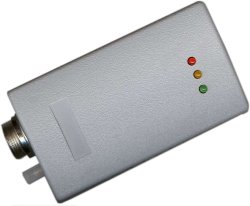
2C0 Pre-Production Prototype (2005/3)
Identifying the 2C0 Pre-Production Prototype
is easy, it does not have the green and black 2C0 label
of the production unit
 shown here and at right.
It simply has 3 different coloured LEDs poking through the case, and nothing on the outside to identify it
as a Tech Edge product at all!.
shown here and at right.
It simply has 3 different coloured LEDs poking through the case, and nothing on the outside to identify it
as a Tech Edge product at all!.
Not a lot of these units were produced and there is some errata
that may be important if you have one, or are thinking of acquiring a used one.
The 2C0 uses a surface mount 44 pin Atmel AT-Mega16 processor at 16 Mhz and
was the third fully digital controller we designed (after the 2A0 and 2B0).
The 2C0 prototype first went on sale in December 2004.
LD01 Wideband Display (2005/1)
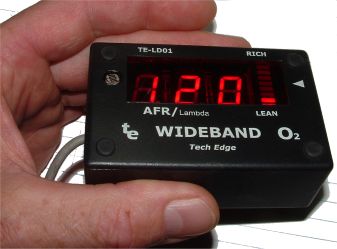
This trusty workhorse was available as either
a DIY kit or as a Prebuilt unit.
Either way, you got a fairly robust 3 digit unit that showed only AFR (with an assumed stoich value of 14.7) and it
could not display Lambda (nor stoich values other than 14.7) without changing the chip inside - we did offer a Lambda mode chip.
It had a few shortcomings - although the display brightness was controlled by an LDR sensor,
it was prone to strobing effects when you went under street lights that made it shine brighter briefly;
its LDR filter time constant was too short.
LD01's biggest shortcoming was that it connected to the wideband controller using an analogue voltage
and this produced errors that could be worked around but it was never
resolved to my total satisfaction.
Later models (LD01b) had an added button at the side. It was the intention we'd use it
to switch between AFR and Lambda however we started selling them when the updated firmware
was not ready and we eventually kept selling them that way (ie. with an apparently non-functional switch).
The LD01 uses a 20 pin Atmel AT-Tiny26 processor (with no crystal) directly driving the LED modules.
It was designed to also be able to drive a multi-line LCD display module.
Inputs for RPM and thermocouples were designed on the PCB but no code was ever written for these modes.
We had the LD01's lid laser-cut and the lettering was screen printed just like the TE-5300 (see below).
The LD01 first went on sale in June 2003 and was primarily designed to compliment the new 2A0 controller
that went on sale the next month (July 2003). The LD01b first went on sale in May 2003 and
was superseded in December 2004 by the LD02 (the last LD01b sale in January 2005).
|
 As much as we think our latest product is the next best thing since sliced bread,
there comes a time when a trusty product slips from the best seller list,
and we decide to retire it as a current product. It becomes obsolete.
It does not mean we don't support or fix it,
It just means you can't buy it from us anymore.
As much as we think our latest product is the next best thing since sliced bread,
there comes a time when a trusty product slips from the best seller list,
and we decide to retire it as a current product. It becomes obsolete.
It does not mean we don't support or fix it,
It just means you can't buy it from us anymore.

